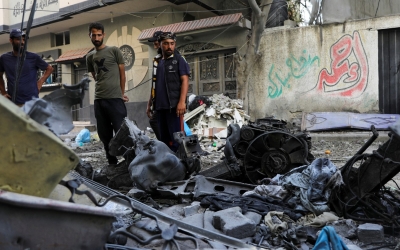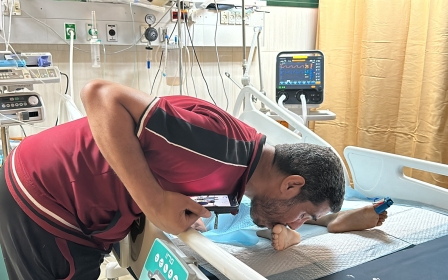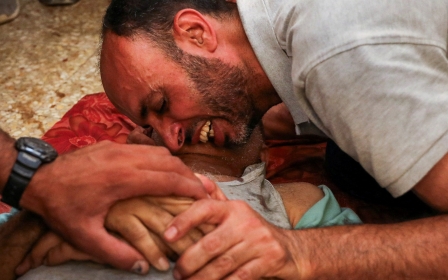The Israeli rescue operation and Nuseirat massacre: What we know so far
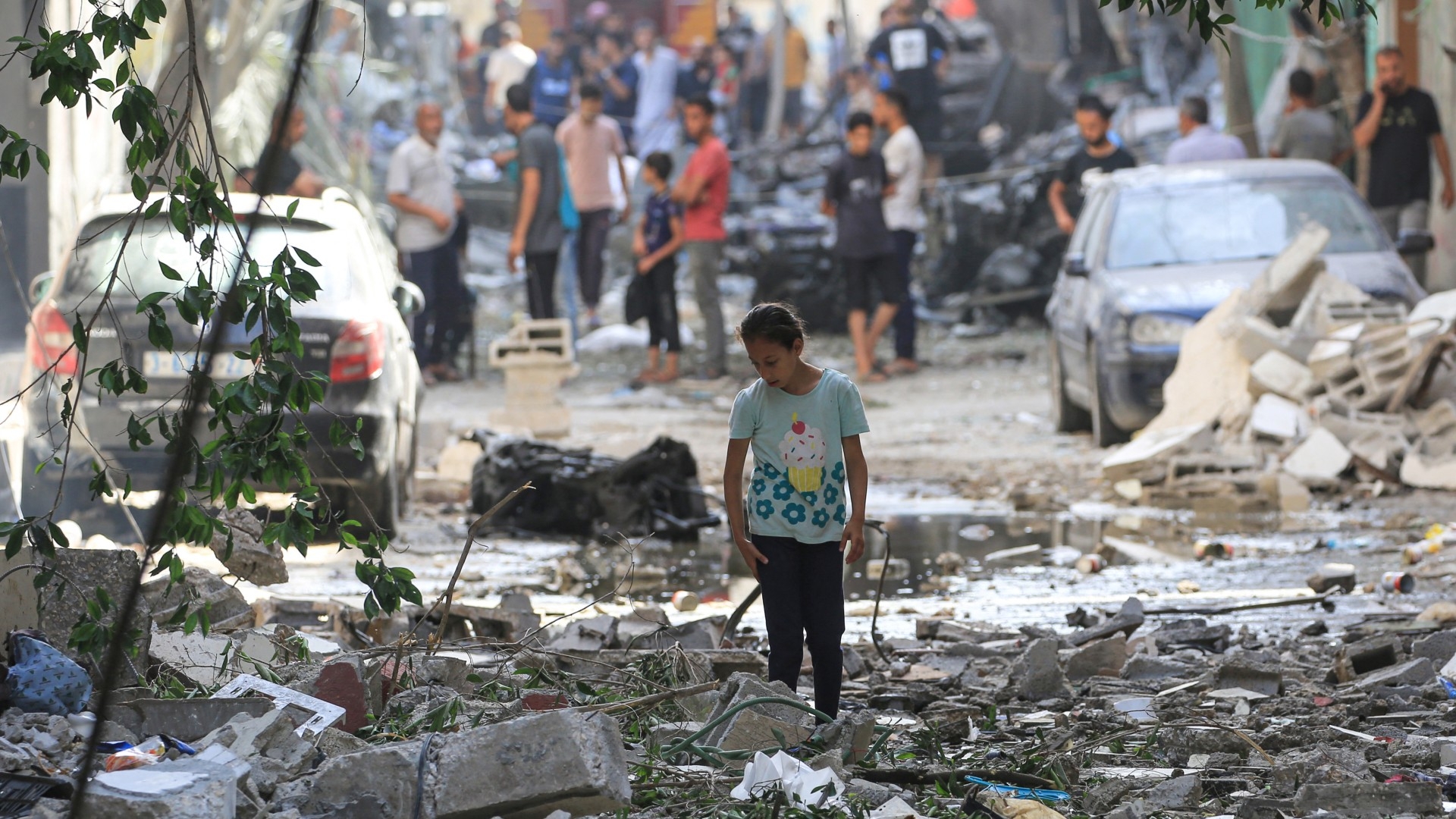
Israel's collective euphoria following the rescue of four captives in Gaza on Saturday stands in stark contrast with the anger, pain and anguish felt by Palestinians after death and destruction were brought to the Nuseirat refugee camp.
Israel's rescue operation in Nuseirat was the largest attempt to release captives since the start of the war, and resulted in the release of Noa Argamani, 25, Almog Meir Jan, 21, Andrey Kozlov, 27, and Shlomi Ziv, 40.
While Israelis have celebrated their return, Palestinians in Gaza have spent the last five days mourning their dead or tending to the wounded in the overcrowded Al-Aqsa Martyrs Hospital.
Survivors have referred to the attack as a "nightmare" and told Middle East Eye that unnecessary blood was spilt.
MEE breaks down what happened in the camp that day and how events unfolded in Gaza and Israel.
New MEE newsletter: Jerusalem Dispatch
Sign up to get the latest insights and analysis on Israel-Palestine, alongside Turkey Unpacked and other MEE newsletters
How the raid started
Palestinian eyewitnesses said Israeli soldiers launched the raids on two apartment buildings in Nuseirat at around 11am local time (0800 GMT) and used two undercover vehicles, including a truck which had commercial markings on its exterior and resembled vehicles used for delivering humanitarian aid.
The truck, according to photos and videos examined by MEE, had a large ad for the German soap brand Pril on its side and was accompanied by at least one tank and one armoured vehicle as it made its way near an apartment block where three of the male captives were held.
Israeli occupation forces infiltrated the Nuseirat refugee camp today in trucks disguised as humanitarian aid. pic.twitter.com/4jcabCKDHu
— أنس الشريف Anas Al-Sharif (@AnasAlSharif0) June 8, 2024
The other vehicle, a white Mercedes van, was piled high with furniture and other belongings, a common sight in the Nuseirat refugee camp that's home to thousands of displaced families.
According to videos seen by MEE, the white Mercedes, a Sprinter S19 CDI, was used to extract Argamani, the female captive, who was being held in a separate building around 200 metres away.
In one of the videos, a ladder could be seen leaning against the multi-storey building where she was held. In the six-second clip, the person who recorded the footage, who appears to be a woman, could be heard saying "they have arrived", an apparent reference to Israeli soldiers.
— احمد سعيد (@ahmedsaedaqa) June 9, 2024
Israeli officials have said both of the vehicles made their way to the refugee camp from Israel. However, five days on, Israeli officials have been reticent to discuss where in Israel they departed from, which crossings may have been used to enter Gaza or what route the Israeli commanders may have taken.
MEE repeatedly reached out to the Israeli military for comment but did not receive a response by time of publication.
Extracting the captives
Eyewitness Hussam al-Arouqi told the Washington Post that he saw two men in plainclothes and about 10 heavily armed soldiers pour out of the back of the Mercedes when they launched their raid on the building where Argamani was held.
Arouqi said the soldiers immediately opened fire, hitting his brother three times in the chest.
His brother Isaam, who is currently receiving treatment for his injuries at one of Gaza's hospitals, recounted seeing the same number of Israeli operatives in an interview he gave to the BBC.
He said there were two individuals in civilian clothes and around 10 in masks and military uniforms.
"Suddenly, special forces came out of it [the Mercedes van] and started shooting," he said.
Israeli military spokesman Daniel Hagari told the New York Times that Israeli forces reached the apartment where Argamani was being held without tipping off her guards. It's unclear, however, whether the weapon that was used on Issam was a firearm or rifle which utilised a silencer.
"In Noa Argamani's building, we surprised them completely," Hagari said.
According to photos seen by MEE, a body appeared to be visible on the ground in front of the Mercedes while the raid was ongoing. It has since become apparent that the individual was a Palestinian fighter who was filmed rushing towards the Mercedes with a gun in his hand while barefoot.
Hagari added that while the raid was taking place on Argamani's building, almost simultaneously, other units entered the apartment holding the other three male captives.
Khalil al-Tahrawi, a 60-year-old shop owner, told both the Times and MEE that he was sitting outside his store when he saw people dressed in the uniforms of the Qassam Brigades, the armed wing of Hamas, approach the building where the three captives were being held.
The group, he said, struck him as "suspicious and strange", adding that they "climbed up the building with ladders and went down again pointing their guns everywhere".
During press briefings, Israeli officials have declined to say whether their forces wore disguises. They have, however, dismissed reports that they used vehicles used by aid agencies.
Amir Avivi, a reservist brigadier general, told the Post that the assault on the apartment where the three male captives were held was far from smooth, with the guards holding the captives shooting an Israeli commander as they entered the building, triggering a firefight.
"Immediately, it became a war zone," Avivi said.
Helmet camera footage released by Israeli authorities showed Israeli forces finding the male hostages inside a residential apartment building, as they continued to exchange fire with Palestinian fighters off screen.
Rare helmet cam footage of the dramatic hostage rescue by our YAMAM officers (Israel Police National Counterterrorism Unit) and brave Israeli security forces! pic.twitter.com/zLiXyHVvCV
— Israel Police (@israelpolice) June 10, 2024
Officials have said that the Israeli soldiers were able to get the three captives and the injured commander, Arnon Zmora, into a vehicle, but it broke down under Hamas fire from rifles and rocket-propelled grenades.
At one point, Avivi said, they were forced to abandon the vehicle and seek refuge in a building nearby.
"Members of Hamas shot at them," Tahrawi, the shop owner, told the Times.
It was at this point that Israeli commanders called in air strikes, officials told the newspaper, as explosions rocked the narrow streets housing families displaced by Israel's offensive in southern Gaza.
In one video taken by local journalist Fadi Thabet, a missile appeared to hit the building near where the white Mercedes van was parked, while another impacted a nearby building.
Footage from the aftermath of the strikes showed that both the van and the building were destroyed.
Palestinians indiscriminately fired upon
Sharifa Hassan, 35, and her husband, Yehia, were preparing lunch in front of a crowded house in Nuseirat where they had sought refuge when the raid began.
"Dozens of helicopters and quadcopters suddenly appeared in the sky. I thought it was an air aid, but they started shooting and bombing randomly," Sharifa told MEE.

Sharifa and her family had already fled from Gaza City to Rafah and then to Nuseirat after the Israeli army declared it a so-called "safe zone".
"We rushed to take shelter behind a wall, all the while thinking about our eight-year-old daughter who had gone to buy snacks from a nearby grocery," Sharifa said.
"The quadcopters were shooting at anything that moved in the area. Many of our neighbours were killed or left bleeding on the ground. After a few minutes, we heard the loud sounds of trucks. We thought it was civil defence or ambulances, but it was tanks."
"Yehia fainted and I was just crying because we couldn't understand what was happening."
"The tanks filled the street and bombed any house that showed any movement. One tank moved over and crushed a man who was injured in his leg. It was the most painful thing I've ever seen in my life," she added.
"The Israeli warplanes began bombing us in all directions"
— Middle East Eye (@MiddleEastEye) June 9, 2024
Palestinian civilian says Israeli forces started attacking in all directions to cover up for its captive recovery operation at the Nuseirat refugee camp.
Civilians in Gaza are left amid the rubble, destruction and dead… pic.twitter.com/WuAetmXVRc
Abdulfattah Aouda told MEE that he and his 73-year-old father were on their way home after shopping in Nuseirat's main market when the raid began.
"It was a normal day until we heard multiple air strikes and explosions around us," Aouda said.
"We quickly decided to get inside a nearby school, but an air strike hit a trash container beside us. My father, bleeding, fainted and fell to the ground. I carried him and ran to the school. He had shrapnel injuries on his hand and bladder."
Aouda said he and his father stayed in the school, along with other evacuees and injured people, all of whom were unaware of what was happening.
"I tried to stop my father's bleeding while people rushed in all directions, searching for their loved ones or taking shelter from the continuous bombardment. It was like a nightmare," Aouda said.
"This was not an operation to free captives - it was a massacre, killing more innocent children and women. We couldn't bear more loss and pain."
Helicopters take off from the beach
According to Israeli officials who spoke to the Times on condition of anonymity, the air strikes were launched to provide the stalled truck with cover, effectively creating a shield of fire for the Israeli commanders and the captives to escape.
The Palestinian government media office in Gaza said in a statement on Telegram that at least 250 air strikes rained down on Nuseirat over a three hour period.
Israeli officials said that Israeli ground forces stationed nearby made their way to the disabled truck and transferred the hostages and Zmora, the wounded officer, to another vehicle.
From there, they sped to the beach, where the second of two helicopters had been waiting for them. The first had already taken off with Argamani on board.
It was unclear how Argamani made her journey to the beach as her vehicle was reportedly destroyed by the air strike on the building where she was held hostage.
One video obtained by MEE showed the second helicopter taking off from the beach with the temporary floating pier built by the US seen in the backdrop.
A video circulating on Hebrew social media claims a helicopter rescued four captives from central Gaza on Saturday, confirming Israel's use of the American temporary pier.
— Middle East Eye (@MiddleEastEye) June 8, 2024
This operation resulted in the killing of over 210 Palestinians. pic.twitter.com/VfkkvqOUuV
Two US officials told CBS News that the pier was not used in the operation, and in a series of statements US Central Command (Centcom) said that the "pier facility, including its equipment, personnel and assets were not used".
Hagari, the Israeli army spokesperson, also denied reports that Israeli forces came from the pier, calling them "completely false".
Reactions and aftermath
Other eyewitnesses described the attack as "hell", with local resident Nidal Abdo telling MEE that he saw "dead children and body parts strewn all over as we fled".
"No one was able to assist them. I saw an elderly man killed on an animal-drawn cart," he said.
Medics and staff at Al-Aqsa Hospital in Deir al-Balah told MEE that they could not keep up with the massive influx of injuries, while Samuel Johann, of the medical charity Doctors Without Borders (MSF), which operates in the hospital, described that day as a "nightmare".
"There have been back-to-back mass casualties as densely populated areas are bombed," he said in a statement. "It's way beyond what anyone could deal with in a functional hospital, let alone with the scarce resources we have here."
US National Security Adviser Jake Sullivan acknowledged that there had been civilian casualties as a result of the raid, calling them "tragic", while the Israeli military rejected the official Palestinian death toll and placed the number of fatalities at less than 100, adding it did not know how many were Hamas fighters.
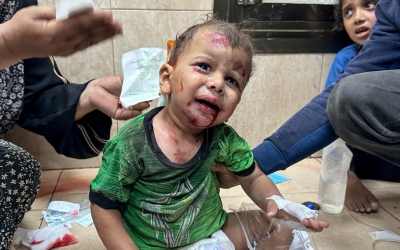
Hours after the attack took place, protests erupted across Israel with thousands demanding Israeli Prime Minister Benjamin Netanyahu approve a permanent ceasefire deal with Hamas that would see the release of all Israeli captives.
"There are still hostages there and we need to get them all out," Michael Levy, whose brother is still held captive in Gaza, told reporters in Tel Aviv.
"They [the Israeli military] won't be able to release all of them in a military operation, so we still have to get to a deal and seal it soon."
Within hours of the operation, Abu Obeida, a spokesman for Hamas's military wing, claimed that Israel had also killed three other captives in the raid, including a US citizen.
MEE could not independently verify the claims.
The 7 October attack left 1,171 people dead and saw hundreds of Israelis taken to Gaza. Around 116 people are thought to remain held captive, with at least a quarter of them believed to be dead.
The war on Gaza, now in its ninth month, has turned much of the enclave, which is home to more than two million Palestinians, into an uninhabitable hellscape.
Whole neighbourhoods have been erased. Homes, schools and hospitals have been devastated by air strikes and scorched by tank fire.
Nearly the entire population is reported to have fled their homes, and those who remained in northern Gaza are on the verge of famine.
More than 37,000 people have been killed, the great majority of them women and children. Thousands more are missing or presumed to be dead under the rubble.
Middle East Eye delivers independent and unrivalled coverage and analysis of the Middle East, North Africa and beyond. To learn more about republishing this content and the associated fees, please fill out this form. More about MEE can be found here.


